The absence of tourists in Waikiki during the early phases of the COVID pandemic presented some interesting photographic opportunities, documenting a part of our islands without the presence of tens-of-millions of visitors.
Not wanting to miss this opportunity, we ventured to Waikiki to produce images of empty beaches, streets, and shopping malls to document the economic and social effects of the pandemic. Thus, began our concept of Endangered Hawaii.
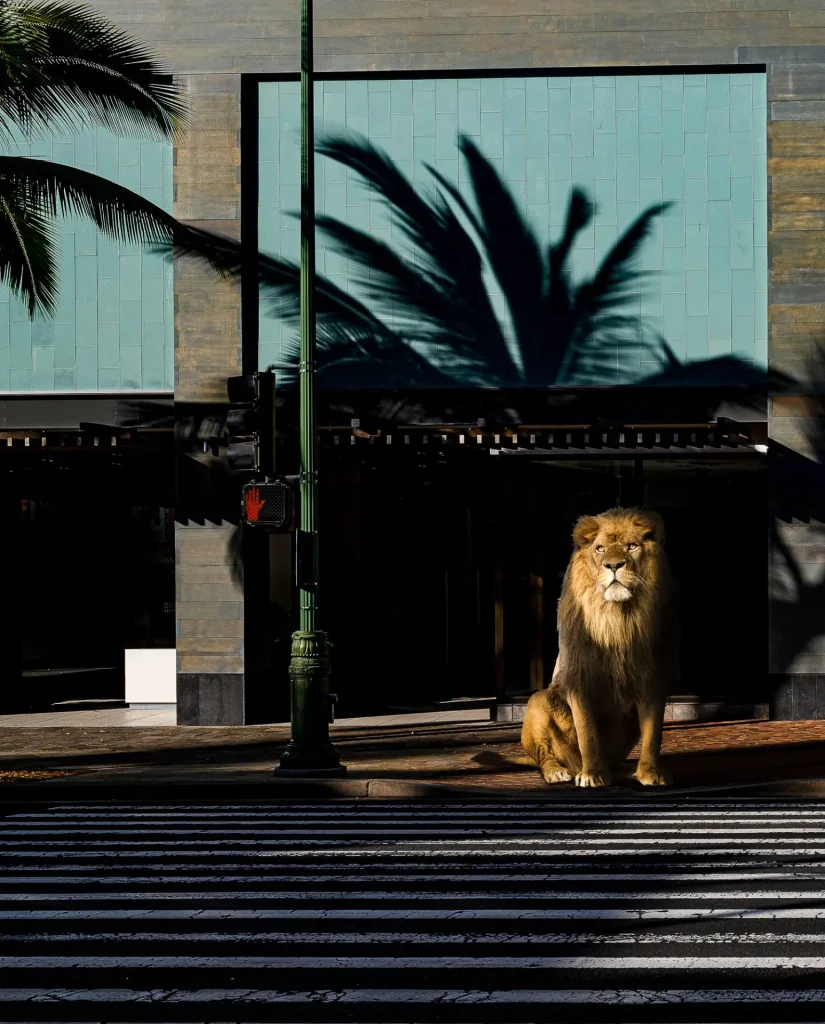
Not only did Gert and I document the shuttering of Hawaii’s largest economic engine, but we used these images as a metaphor to put a spotlight on continuing impacts such as loss of Hawaii’s endemic species and climate change.
The concept of an ‘endangered’ Hawaii converged with Gert’s interest in using digital image manipulation to create surrealistic images – merging photographs of Hawaii with photos of endangered animals taking over the empty streets, beaches, and malls. The abandoned streets and beaches provided an empty canvas for animals to be added, building a dimensional view of several converging issues impacting Hawaii and amplified during the pandemic.
While Hawaii is the home of the largest number of endangered species in the United States, they are relatively unknown or unrecognizable to most people outside the islands. Therefore, we decided to place more iconic animals into the urban environment of an empty tourist mecca to shock the senses, provoke a second look, and inspire conversation.
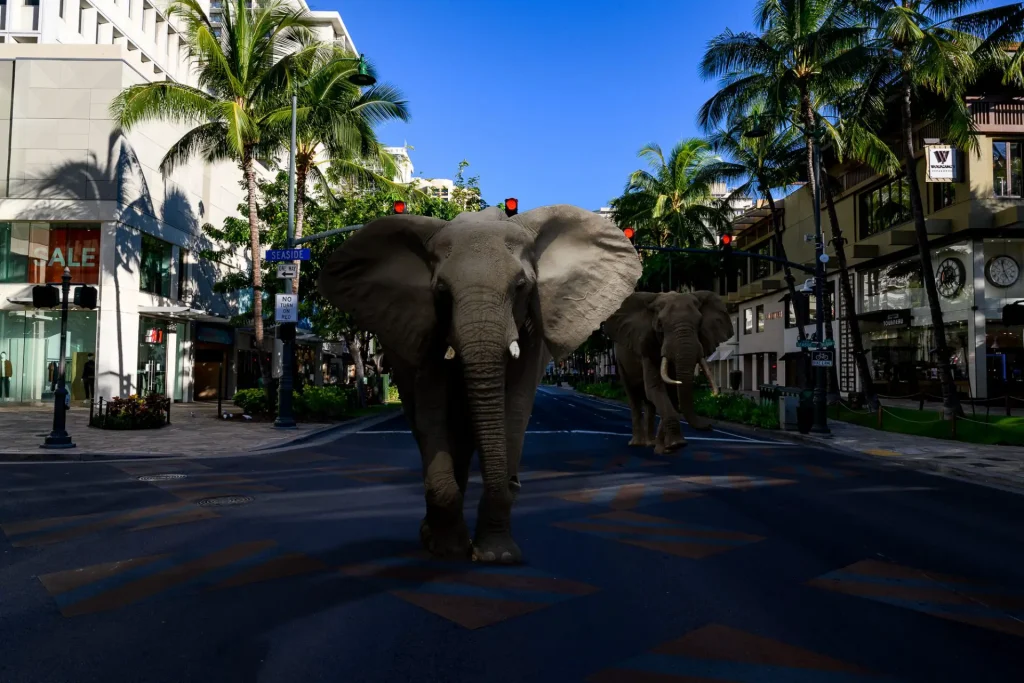
What is “the conversation” we want to begin? In fact, the discussion concerning sustainability, environmental impacts and changing economies started as early as the 19th century when sugarcane plantations gained a foothold in Hawaii. When large scale agriculture displaced Hawaii’s sustainable and traditional agriculture practices, crops, fishponds and watershed management, our island environment and economy became increasingly imbalanced.
Has the pandemic benefited our islands? Reports worldwide have noted environmental benefits of the pandemic. Changing labor practices such as working from home and lockdowns to minimize infection spread have led to a reduction in atmospheric carbon. Likewise, in Hawaii, scientists have also reported clearer nearshore waters, reduced strain on drinking water sources and cleaner air. Increasingly native species including seals, turtles, and sea birds are seen along shorelines recently dominated by visitors and locals. However, we must be aware that a momentary pause will not stop the impacts we are experiencing throughout the Pacific region. Longer and more severe periods of drought interspersed by more impactful storms, higher sea levels and tidal inundation are already here.
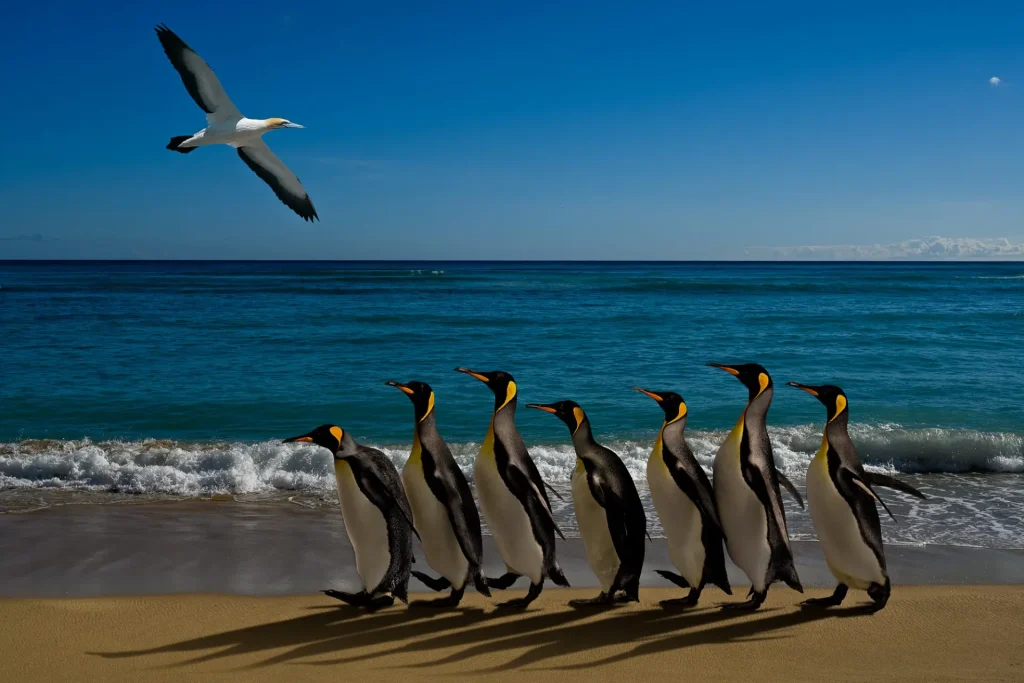
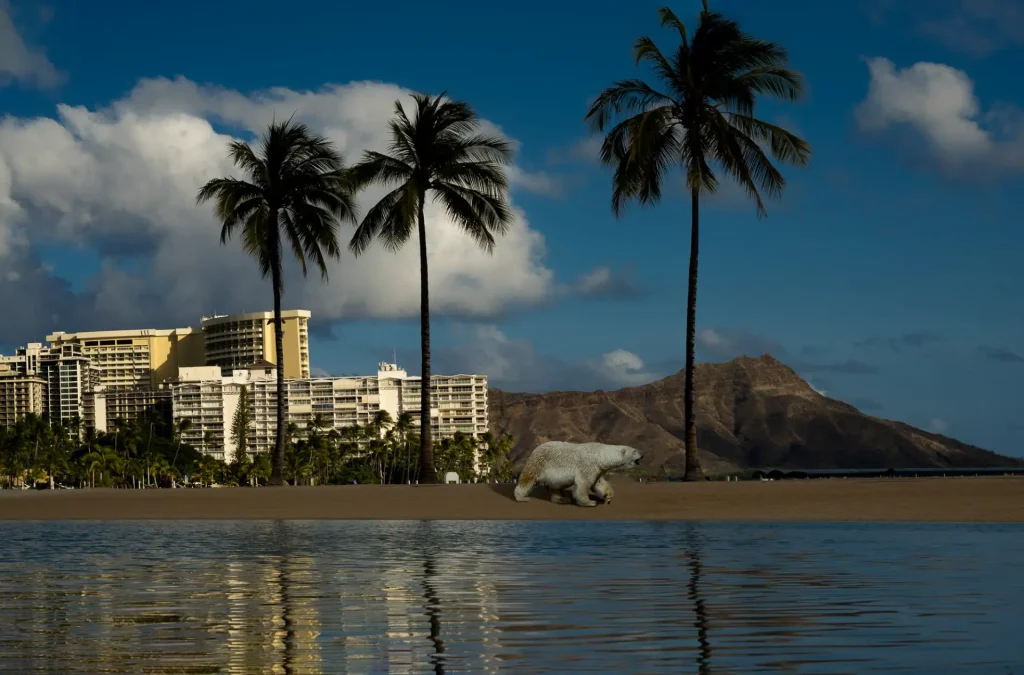
Will Hawaii finally move to a more diversified economy? Our visits to Waikiki during the first days of the pandemic lock-down was a startling realization that the dominant economic sector in Hawaii, tourism, was halted as were the livelihoods of so many of our neighbors tied by jobs or business related to tourism. The pandemic decimated the state budget of an island state of one million residents dependent on an annual 10 million visitors (and $17 billion they spent in 2019) and has contributed to an unemployment rate of 15% at the end of 2020; one of the highest unemployment rates in the nation.
Our project and other images that we are gathering, is our attempt as citizens, to highlight the many impacts and changes we see in our islands. Recently, the Marshall Islands poet and writer Kathy Jetnil-Kijiner was quoted as saying “Real meaningful climate action is about being inclusive and doesn’t leave our most vulnerable community members behind.”
We want to encourage this conversation as part of a community of photographers and not leave any one of our communities behind: earth, man, bird, fish, or beast. We have the ability to tell these stories in a visual way and initiate conversation by our images: digital, film or a digital collage. I hope you will join us, spark a conversation, and share what you are experiencing in your community.
Many thanks for this opportunity to share our project with you.
Susan Polanco de Couet and H. Gert de Couet
Kailua, Hawaii
Notes:
Animal images were sourced from public domain sites as well as from stock agencies.
For ease of publication, we are using English rather than Hawaiian standard spelling for Hawaiian names and places.
Share this post:
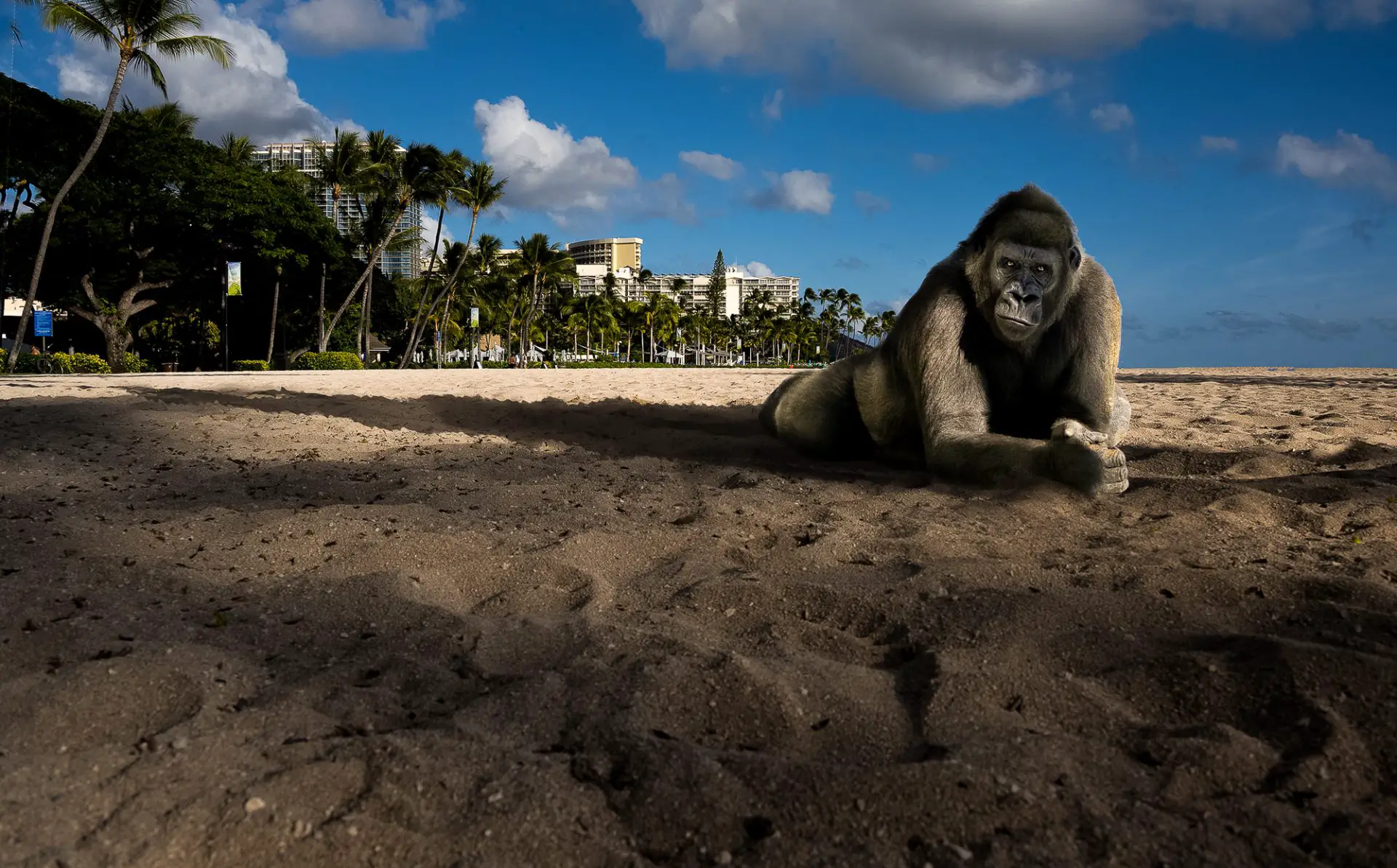








Comments
Jim on Endangered Hawaii / Wild Waikiki – by Susan Polanco de Couet and H.Gert de Couet
Comment posted: 19/02/2021
Comment posted: 19/02/2021